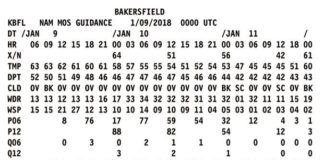(Editor’s note: This is the first of a new article type we’ll run occasionally. We’re calling the article type, “Yes, You Can” or “No, You Can’t.” These articles will cover some commonly held misconceptions in the regs where you can do something you might have thought you couldn’t, or you can’t do something you thought you could. Please let us know what you think of this new article type, and if you have any suggestions for topics you’d like us to cover.)
You are planning an IFR flight. It’s a route you have flown many times before. You always file direct and most of the time the cooperative controllers give it to you. So you again file direct, toss in a nearby Class B or C as an alternate, and calculate your fuel requirements for a flight to the alternate. You’ve met your obligations under 14 CFR 91.167 and 91.169. Or have you?
We will review the basics. We’ll use airplanes to keep things simple (helicopters have a few more liberal requirements). The two pertinent regulations are 91.167 and 91.169, reproduced in part to the right.
Do I Need to File an Alternate?
Per 91.169(a) our IFR flight plan must include an alternate airport—we’ll call this the “filed alternate”—unless two conditions apply. A filed alternate is not required when the destination has a published instrument approach procedure (IAP) and the destination weather forecast for an hour before to an hour after our estimated time of arrival (ETA) is at least a 2000-foot ceiling with three statute miles visibility. Filing IFR to an airport without an IAP is fine, but you must have a filed alternate even if the weather is clear-and-a-million. The second condition is the familiar “1-2-3 Rule.”
Choosing the Alternate
Generally, to name an airport as a filed alternate, the minimum forecast at the ETA, the “standard alternate minimums,” is for two statute miles visibility with a 600-foot ceiling for a precision approach; an 800-foot ceiling for a nonprecision approach. The filed alternate does not have to have an IAP at all, but the conditions from the MEA to the ground must be VFR.
Not all airports qualify. Some can’t be used at all. When you see




